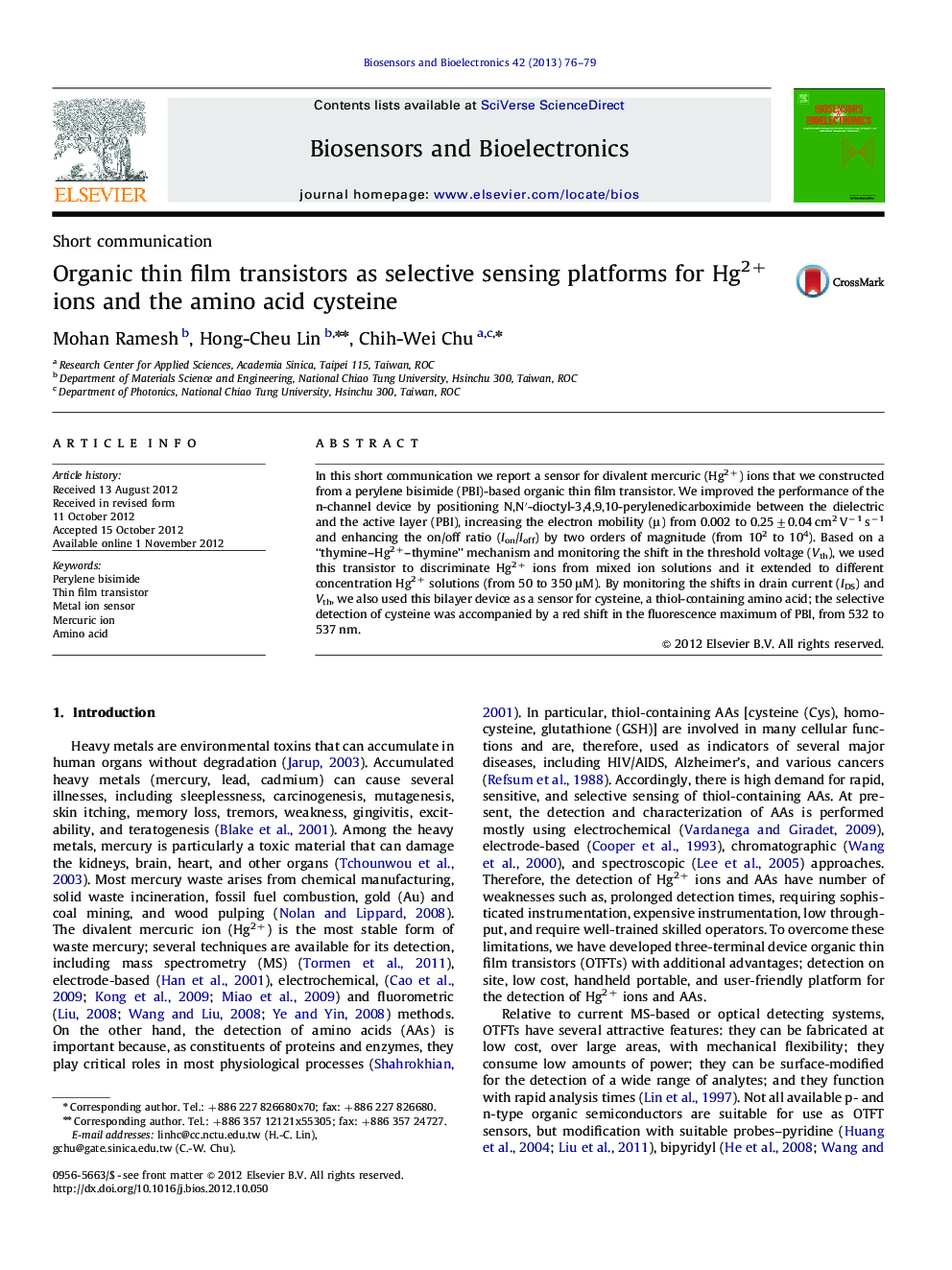| Article ID | Journal | Published Year | Pages | File Type |
|---|---|---|---|---|
| 867154 | Biosensors and Bioelectronics | 2013 | 4 Pages |
In this short communication we report a sensor for divalent mercuric (Hg2+) ions that we constructed from a perylene bisimide (PBI)-based organic thin film transistor. We improved the performance of the n-channel device by positioning N,N′-dioctyl-3,4,9,10-perylenedicarboximide between the dielectric and the active layer (PBI), increasing the electron mobility (μ) from 0.002 to 0.25±0.04 cm2 V−1 s−1 and enhancing the on/off ratio (Ion/Ioff) by two orders of magnitude (from 102 to 104). Based on a “thymine–Hg2+–thymine” mechanism and monitoring the shift in the threshold voltage (Vth), we used this transistor to discriminate Hg2+ ions from mixed ion solutions and it extended to different concentration Hg2+ solutions (from 50 to 350 μM). By monitoring the shifts in drain current (IDS) and Vth, we also used this bilayer device as a sensor for cysteine, a thiol-containing amino acid; the selective detection of cysteine was accompanied by a red shift in the fluorescence maximum of PBI, from 532 to 537 nm.
► Detecting the selective divalent metal cation (Hg2+) from the single metal and double metal ions. ► This detection was monitored via PTCDI-C8/PBI OTFTs, by observing the change in threshold shift. ► It is extended to sense the thiol-containing AA (Cys-L) by the change in both the IDS and Vth shift. ► Selective detection of cysteine is conformed in red shift of fluorescence spectra enhancement at 537 nm.
